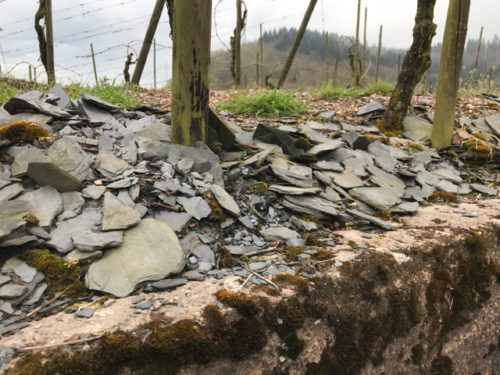 There’s plenty of disagreement about what’s mainly responsible for the expression of individual character in wine, but right now, if you had to bet, you’d be wise to put your money on soils because that’s where the talk is.
There’s plenty of disagreement about what’s mainly responsible for the expression of individual character in wine, but right now, if you had to bet, you’d be wise to put your money on soils because that’s where the talk is.
In the soil-as-primary-determinant-of-wine-character theory it’s the mineral content and the organization of dirt and rock in vineyards that sets the tone for the wine that issues from it, and while science hasn’t yet blessed this hypothesis, the notion that geology is destiny seems to have a powerful hold on us. But just what is so enthralling about soils anyway, and why are we so ready to find in them a simple answer to what is by all accounts a very complicated problem?
A big part of it is surely their brute tangibility. Land has a physical solidity that makes other factors (latitude, degree days, rainfall, day-night temperature differentials) seem ephemeral by contrast. When the time comes to identify the source of the character of the wine in your glass it helps that there’s some physical thing to point to. Ground gives you that.
Terrain also conveys an impression of primordial permanence. Geological changes don’t normally occur on a time scale commensurate with a human life. If, by some magic, a Burgundian monk-vintner from the 15th century were to return, would he still be able to distinguish a Chambolle-Musigny from a Gevrey-Chambertin? And if he could, what more plausible justification could we find for this remarkable feat than the underlying geology of the Côte de Nuits itself, essentially unchanged in 600 years?
Soils monopolize our attention for another, less obvious reason: the rough consonance that exists between the number of distinguishable types of wine and the number of discrete geologies that are purported to nurture them. There’s no way to count them of course, but it seems to me that the number of existing soil profiles and the multiplicity of identities wine is able to assume are consonant — if only on an order of magnitude level.
Finally, soils are compelling because we frequently discover earthy flavors and aromas in our wine. And while it has been demonstrated that those aspects of wine that are conventionally described as slatey or flinty actually have their source in either sulfur compounds generated during fermentation or plant compounds attributable to vine biology, it doesn’t change the fact that, for us, these tastes and smells are more reminiscent of soils and stones than anything else.
One day we may know just how much of a contribution soils make in determining wine character and understand how they interact with those other durable environmental factors — climate, exposition, latitude, etc — that we have reason to think also have a role to play. Meanwhile, and until some more compelling theory comes along to displace it, dirt, rocks, soils, and stones seem destined for a good long run as explainers-in-chief, even if the confidence we place them is largely derived from appeals to our own imaginations.
-Stephen Meuse
Taste, talk and learn about wine this week in the FKC wine corner . . .
THURSDAY, MARCH 7 4-6 PM – MISE WINES’ DAVID MITCHELL POURING
2017 Ca’Liptra, “Ca’Liptra” Marche Bianco – $22.95
2016 Togni Rebaioli “Martina” Vino Rosato – $23.95
2016 Domaine Huards, “Envol” Cheverny Rouge – $22.95
FRIDAY, MARCH 8 3-6 PM – EXPLAINERS IN CHIEF
2017 Bodegas Ostatu Rioja Alavesa Blanco – $25.95
2017 Thevenet “Les Clos” Bourgogne Rouge – $19.95
2016 Franck Balthazar Côtes du Rhone – $23.93